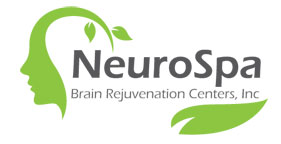Botox, which is short for Botulinum toxin, is a word that mostly evokes images of cosmetic procedures and too many sitcom jokes to mention.
OnabotulinumtoxinA is derived from the bacterium Clostridium botulinum and is indeed known for its ability to relax muscles by blocking nerve signals, but it does so much more than remove wrinkles. In fact, the number of neurological applications onabotulinumtoxinA has may astonish you. So, what neurological disorders can be treated with onabotulinumtoxinA?
Chronic Migraine Headaches
Chronic migraines can be horrendously debilitating and lead to a tremendous loss in one’s quality of life. While the causes of most migraines are unknown, many can be treated with onabotulinumtoxinA injections. Through neurology onabotulinumtoxinA injections, the toxin is delivered via a series of pinpricks to the areas of the face affected by the migraine. This helps cut off the pain signals sent by the local sensory neurons to the brain and can provide relief for several months. While the onabotulinumtoxinA does not cure the migraines, it can prevent their debilitating pain and allow sufferers to function normally.
Spasticity Caused by Neurological Disease
Spasticity is defined as an increase in muscle tone or stiffness. It can cause a great deal of pain and discomfort and can also make it difficult for a patient to speak or move. Once again, OnabotulinumtoxinA injections can be applied to relax the muscles by interfering with the affected nerves’ ability to send signals to the brain. According to several respected medical sites, OnabotulinumtoxinA has been proven to alleviate spasticity in individuals experiencing symptoms associated with amyotrophic lateral sclerosis (ALS), multiple sclerosis (MS), and cerebral palsy, and spasticity connected with head injuries and trauma. Without the signals, the brain can’t send the “order” to stiffen up.
Dystonia
Dystonia describes a disorder in which the sufferer experiences involuntary muscle contractions in one or several parts of the body, causing twisting or otherwise repeating movements. Some dystonia is minor, but more severe versions can be painful and debilitating. Dystonia can be genetic or caused by outside factors like drugs, but there is no specific cause or cure. Still, there are treatments and surgeries that can help alleviate symptoms, and OnabotulinumtoxinA injections are one of them. The affected muscles are identified and treated periodically (every three months or so) with onabotulinumtoxinA injections. The onabotulinumtoxinA serves to normalize the muscles’ functioning, providing sufferers with some relief and freedom from contractions.
Excessive Drooling and Sweating
What other neurological disorders can be treated with onabotulinumtoxinA? If you experience extreme sweatiness or drooling owing to an underlying condition —Parkinson’s disease for one— onabotulinumtoxinA injections can help stem the flow. The onabotulinumtoxinA can interrupt the release of yet another nerve signal that causes the body to drool or overproduce sweat.
If you’re experiencing any of these symptoms or conditions, it may be worth asking your doctor or neurologist if onabotulinumtoxinA can help you.


